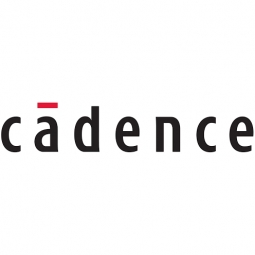Technology Category
- Sensors - Flow Meters
- Sensors - Liquid Detection Sensors
Applicable Industries
- Electronics
- Equipment & Machinery
Applicable Functions
- Product Research & Development
- Quality Assurance
Use Cases
- Time Sensitive Networking
- Visual Quality Detection
Services
- System Integration
- Testing & Certification
About The Customer
Sharp Corporation is a Japan-based company known globally for its electronic products and technologies. The company's product range includes solar panels, audio-visual entertainment equipment, LCD panels, projectors, microwave ovens, complementary metal-oxide-semiconductor (CMOS) sensors, charge-coupled device (CCD) sensors, and Flash memory. Sharp is dedicated to improving people’s lives through the use of advanced technology and a commitment to design innovation, quality, and value. Recently, the company embarked on designing a new consumer electronics CMOS image sensor, an active pixel sensor with circuitry that converts light energy to voltage, and circuitry that converts voltage to digital image data.
The Challenge
Sharp Corporation, a global electronics company based in Japan, was faced with the challenge of speeding up the time to market for a new CMOS image sensor without compromising on product quality. The market for sensors and micro-electromechanical systems (MEMS) devices was rapidly expanding, driven by the increasing demand for user-friendly consumer electronics in various sectors including automobiles, computers, medical equipment, and portable products such as media players, tablets, and smartphones. This put immense pressure on Sharp to produce highly differentiated products within increasingly tight timeframes. The design challenge was to address timing and routability convergence challenges.
The Solution
To overcome these challenges, Sharp decided to adopt the Cadence® Encounter® RTL-to-GDSII flow to develop its CMOS image sensors. This included standardizing on Encounter RTL Compiler, Encounter Conformal® Equivalence Checker, Encounter Digital Implementation System, and Encounter Test. The Encounter RTL-to-GDSII flow provided Sharp with fast and flexible feasibility analysis, giving its design engineers an early and accurate view of whether the complex design would meet their targets and be physically realized. One key benefit of the Encounter RTL-to-GDSII flow was physical-aware register-transfer level (RTL) synthesis. This takes physical layout information into account to address timing and congestion issues much earlier in the design process than is possible when using a conventional flow. Encounter Test On-Product Clock Generation (OPCG) inserted automatically into the design netlist through RTL Compiler synthesis enabled the Sharp design team an at-speed ATPG test flow thus improving overall test quality.
Operational Impact
Quantitative Benefit

Case Study missing?
Start adding your own!
Register with your work email and create a new case study profile for your business.
Related Case Studies.

Case Study
Smart Water Filtration Systems
Before working with Ayla Networks, Ozner was already using cloud connectivity to identify and solve water-filtration system malfunctions as well as to monitor filter cartridges for replacements.But, in June 2015, Ozner executives talked with Ayla about how the company might further improve its water systems with IoT technology. They liked what they heard from Ayla, but the executives needed to be sure that Ayla’s Agile IoT Platform provided the security and reliability Ozner required.

Case Study
IoT enabled Fleet Management with MindSphere
In view of growing competition, Gämmerler had a strong need to remain competitive via process optimization, reliability and gentle handling of printed products, even at highest press speeds. In addition, a digitalization initiative also included developing a key differentiation via data-driven services offers.

Case Study
Predictive Maintenance for Industrial Chillers
For global leaders in the industrial chiller manufacturing, reliability of the entire production process is of the utmost importance. Chillers are refrigeration systems that produce ice water to provide cooling for a process or industrial application. One of those leaders sought a way to respond to asset performance issues, even before they occur. The intelligence to guarantee maximum reliability of cooling devices is embedded (pre-alarming). A pre-alarming phase means that the cooling device still works, but symptoms may appear, telling manufacturers that a failure is likely to occur in the near future. Chillers who are not internet connected at that moment, provide little insight in this pre-alarming phase.

Case Study
Remote Temperature Monitoring of Perishable Goods Saves Money
RMONI was facing temperature monitoring challenges in a cold chain business. A cold chain must be established and maintained to ensure goods have been properly refrigerated during every step of the process, making temperature monitoring a critical business function. Manual registration practice can be very costly, labor intensive and prone to mistakes.

Case Study
Premium Appliance Producer Innovates with Internet of Everything
Sub-Zero faced the largest product launch in the company’s history:It wanted to launch 60 new products as scheduled while simultaneously opening a new “greenfield” production facility, yet still adhering to stringent quality requirements and manage issues from new supply-chain partners. A the same time, it wanted to increase staff productivity time and collaboration while reducing travel and costs.








